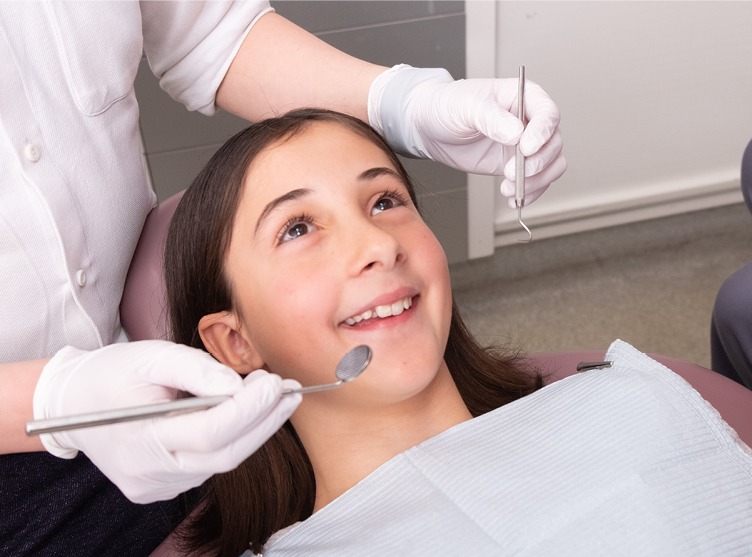Some Known Incorrect Statements About Legacy Orthodontics
Some Known Incorrect Statements About Legacy Orthodontics
Blog Article
Legacy Orthodontics - An Overview
Table of ContentsNot known Factual Statements About Legacy Orthodontics Get This Report about Legacy Orthodontics3 Simple Techniques For Legacy OrthodonticsLegacy Orthodontics Things To Know Before You BuyThe Greatest Guide To Legacy Orthodontics
At Advanced Orthodontics, we give patients with a holistic treatment experience. Furthermore, we use flexible therapy schedules, adaptable repayment options and a fun, delightful experience. braces. Call ( 480) 357-4900 today to find out more and timetable a visit.An orthodontist is a dental practitioner educated to diagnose, prevent, and treat teeth and jaw irregularities. They deal with existing problems and are educated to determine issues that may develop in the future. Orthodontists collaborate with people of every ages, from youngsters to adults. People frequently connect an ideal smile with health.
Malocclusion, or misaligned teeth, can cause oral problems, consisting of tooth decay, gum tissue disease, and difficult or excruciating eating. Not every person is birthed with straight teeth. If you have a bad bite or huge rooms between your teeth, you may want to speak with a dental expert focusing on orthodontic care.
More About Legacy Orthodontics
( Picture Credit Rating: DigitalVision/Getty Images) Orthodontists use dealt with and removable oral tools, like braces, retainers, and bands, to transform the position of teeth in your mouth. Orthodontic treatment is for oral problems, including: Crooked teethBite problems, like an overbite or an underbiteCrowded teeth or teeth that are as well far apartJaw misalignmentThe goal of orthodontic treatment is to enhance your bite.
A healthy bite ensures you can consume, eat, and talk properly. While you could think about orthodontists as mostly for children or young adults that need dental braces, they can remedy dental problems at any type of age. Orthodontists participate in university, dental college, and orthodontic institution. After college graduation, they spend 2 or 3 years in an orthodontic residency program.
All orthodontists are dental practitioners, yet not all dental experts are orthodontists. Orthodontic residency programs offer intensive, concentrated instruction for oral professionals. They focus on 2 areas: Just how to correctly and safely move teeth How to appropriately assist advancement in the teeth, jaw, and faceOnce an orthodontist has finished training, they have the alternative to become board accredited.
Legacy Orthodontics Fundamentals Explained
Imbalance, or malocclusion, is the most typical factor people see an orthodontist. It is hereditary and is the result of size differences between the top and reduced jaw or between the jaw and teeth. Malocclusion results in tooth congestion, a twisted jaw, or irregular bite patterns. Malocclusion is typically treated with: Your orthodontist attaches steel, ceramic, or plastic square bonds to your teeth.
If you have only small malocclusion, you might be able to make use of clear dental braces, called aligners, rather than typical dental braces (https://linktr.ee/brianmccune20176). Some people require a headwear to aid relocate teeth into line with pressure from outside the mouth. After braces or aligners, you'll require to wear a retainer. A retainer is a custom-made gadget that keeps your teeth in area.
They can create added space in the mouth without having to pull teeth. Orthodontists use cables, surgical screws, or plates to sustain your jaw bone.
You might need to see an orthodontist if you have: Crowding or otherwise enough space for all of your teethOverbite, when your upper teeth come your bottom teethUnderbite, when your base teeth are too much forwardSpacing or issues with gapsCrossbite, which is when your top teeth fit behind your base teeth when your mouth is closedOpen bite or an upright space between your front bottom and upper teethMisplaced midline, when the facility of your bottom and upper teeth do not align Dealing with a dental malocclusion can: Make attacking, chewing, and speaking easierImprove the proportion of our face and your overall appearanceEase discomfort from temporomandibular joint problemsDifferent your teeth and make them simpler to clean up, assisting avoid dental caries or tooth cavities It's frequently a dentist that initially notices misaligned teeth during a regular examination.
Some Known Factual Statements About Legacy Orthodontics

Throughout your first orthodontic assessment, you'll likely have: An oral examPhotos taken of your face and smileDental X-raysPanoramic (360 degree) X-rays of your face and headImpressions to create mold and mildews of your teethThese tests will certainly aid your orthodontist understand how to proceed with your treatment. orthodontist. An orthodontist is a dentist who's had training to treat your teeth and jaw
An orthodontist is concentrated on your bite, so something like a damaged tooth would certainly be dealt with by a dental professional. Orthodontists are concentrated on your bite, or the way your teeth fit with each other, and the straightness of your teeth.
Ever before wondered how celebrities always appear to have flawlessly aligned teeth? The response frequently lies in the competent hands of an orthodontist. What precisely does an orthodontist do? Orthodontists are dental professionals that concentrate on dealing with irregularities in the teeth and jaws. Their knowledge exceeds simply developing a stunning smile; it encompasses improving your general oral wellness and function.
Some Known Incorrect Statements About Legacy Orthodontics

, orthodontists have a diverse toolkit at their disposal. These tried-and-true braces use a system of braces adhered to the teeth and linked by wires.
These removable trays are helpful site customized to considerably shift the teeth's position. In cases of narrow jaws, palatal expanders can be made use of to develop area for appropriate tooth placement.
Report this page